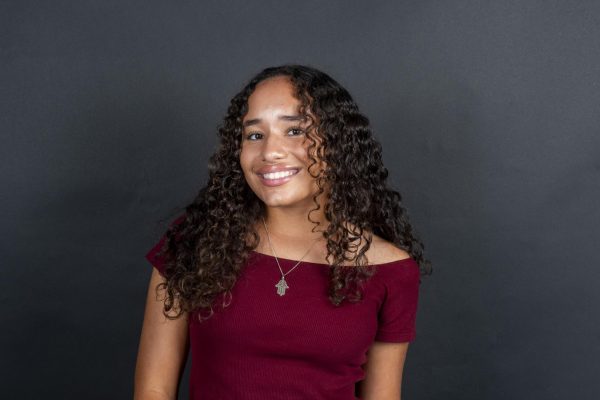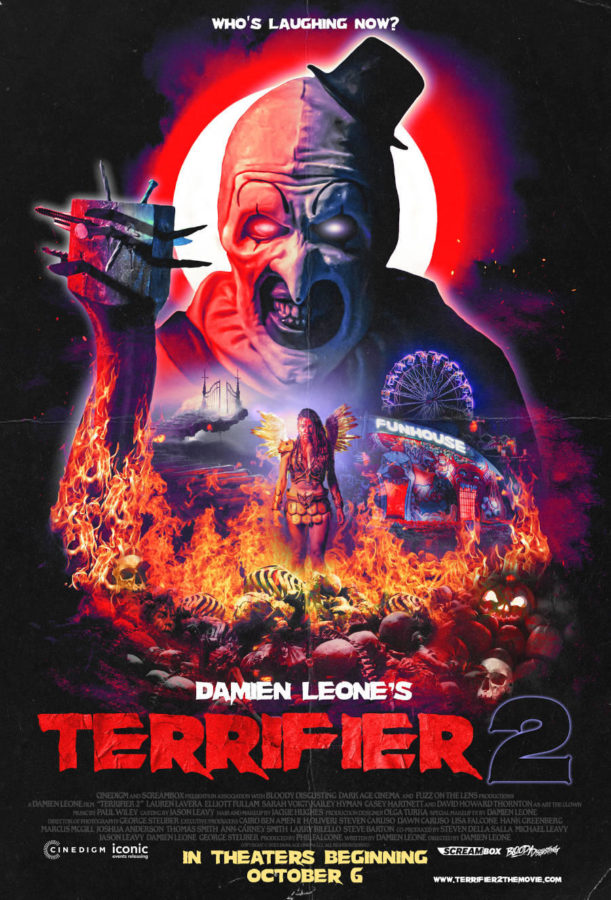The Gore Has Got to Go
The normalization of excessive gore and violence across horror and action films is desensitizing viewers to its real dangers and grotesque nature.
On Halloween weekend, I went over to my friend’s house and watched the movie “Terrifier 2” for a bit of heart-stopping entertainment. Within a few minutes, I endured many depictions of violence, witnessing three murders that were gruesome enough to make me turn away and cover my eyes. In one, a character’s eye was ripped out and shoved into the killer’s empty eye socket. However, being inundated with so much gore took away from the movie’s “scare factor” rather quickly. By the fourth and fifth murders, I became desensitized to the extreme displays of violence, watching the movie with zero jump in my heart rate.
The weekend before Halloween, I watched the Jamie Lee Curtis-led “Halloween Kills” with my family. This was the beginning of the desensitization process. The movie showed at least 30 acts of extreme violence, depicting the graphic murder and maiming of half of the cast members. In fact, by the end of Halloween Kills, I was so emotionally spent that the excessive gore almost seemed cartoonish; I watched the rest of the movie without my typical heightened sense of anxiety.
My exposure to more and more scenes of graphic violence made me less affected over time. My initial “fight or flight” reaction to scenes became less pronounced until it became nonexistent. I felt almost numb or immune to these depictions over time. Instead of my typical emotional and physical responses to violent imagery, I found myself less inclined to shut my eyes or turn away during especially grotesque scenes.
My reactions to repeated viewing of violent imagery are not unique. According to the American Psychological Association, “exposure to media violence can desensitize people to violence in the real world and that, for some people, watching violence in the media becomes enjoyable and does not result in the anxious arousal that would be expected from seeing such imagery.” We see this in the real world where previously unimaginable acts of violence are met with little more than a fleeting “Headline News” story and are quickly forgotten. School shootings are a prime example.
Today, movies in the action or horror genre that lack graphic violence are few and far between. Of course, acts of violence will be depicted and people will be killed in such movies. But to me, there is a stark difference between a character shown to be stabbed once or twice versus a character being stabbed repeatedly even after death, often with dismembered limbs and blood spraying everywhere.
This contrast comes into focus when I compare the current landscape of horror and action movies to ones from decades past. Compare the original “Halloween” to “Halloween Kills” and you’ll see a tremendous difference. The suggestion of violence or the occasional shadow lets the viewers imagine what was coming. Whereas, the new movie no longer relies on the psychological component of fear. It shows a steady increase in violent acts, rendering the viewer unable to recover and process what they have just seen. The movies continue to up the ante, with more and more gore shown at an exhaustible rate. This begs the question of why?
Are we being shown more violent images because we are a violent society and it feeds a craving, or is our media reflecting the real-life violence that appears constantly? What do we lose as a society when extreme acts of violence fail to elicit an emotional response? We lose our empathy and violence becomes an everyday thing. Movies that should force us to shudder and turn away, instead cause us to stare expectantly at the screen.
Whether the depictions of excessive violence are the results of our modern society or a stylistic choice by the entertainment industry, the trend shows no signs of slowing down. I wonder if this trend will increase, and what the real consequences will be. I, for one, am afraid of a world that fails to shudder at the site of violence. That would be the scariest ending of all.

My name is Amina and this is my fourth year on staff and second as an entertainment editor. I can't wait for my senior year and am excited to continue being a part of the High Tide!



